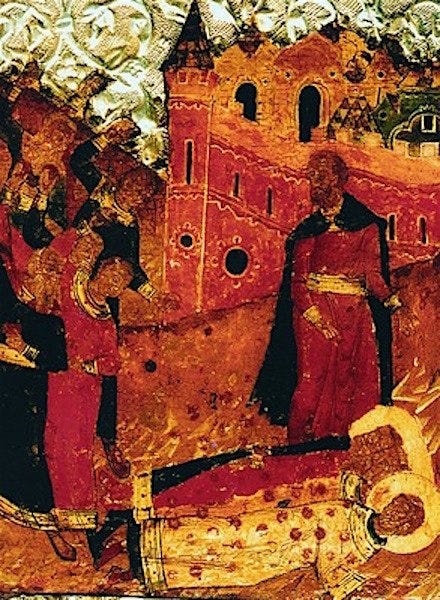The Translation of the Relics of Saint Stephen the Protomartyr and Archdeacon from Jerusalem to Constantinople
The translation of the relics of Saint Stephen the Protomartyr and Archdeacon from Jerusalem to Constantinople occurred around the year 428. After Saint Stephen was stoned to death by the Jews, his holy body was left unburied to be consumed by wild animals and birds. However, on the second night, the famous Jewish teacher of the law, Gamaliel, who had begun to lean toward faith in Jesus Christ as the Messiah and had defended the apostles before the Sanhedrin (Acts 5:34-40), sent his trusted men to retrieve the body of the Protomartyr. Gamaliel buried it on his own land, in a cave near Jerusalem. When the secret disciple of the Lord, Nicodemus, who came to Him by night (John 3:1-21; 7:50-52; 19:38-42), passed away, Gamaliel also buried him near the tomb of Archdeacon Stephen. Later, Gamaliel himself, having received Holy Baptism along with his son Abibas, was buried beside the Protomartyr Stephen and Saint Nicodemus.
In 415, the relics of these saints were miraculously discovered and were solemnly translated to Jerusalem by Archbishop John, along with Bishops Eleutherius of Sebaste and Eleutherius of Jericho. From that time, healings began to occur through the relics.
Later, during the reign of the pious Emperor Theodosius the Younger (408-450), the relics of Saint Stephen the Protomartyr were transferred from Jerusalem to Constantinople and placed in a church dedicated to Saint Lawrence the Deacon. After the construction of a church in honor of the Protomartyr Stephen, the relics were translated there on August 2. The right hand of the Protomartyr is kept in the Serapion Chamber of the Trinity-Sergius Lavra.
Saint Basil the Blessed
Saint Basil the Blessed was born in a village near Moscow. At the age of 16, he left his parents' home and took upon himself the ascetic feat of foolishness for Christ, which he bore for 72 years. He was granted by God the gift of clairvoyance, and through his apparent pranks and antics, he revealed the hidden sins and wicked deeds of people for their correction and salvation. Even Tsar Ivan the Terrible feared his rebukes. After the death of Saint Basil in 1577, Tsar Ivan himself carried his coffin to the place of burial. The body of the righteous man was laid to rest at the Intercession Cathedral on Red Square, which to this day is more commonly known by the people as Saint Basil’s Cathedral.




